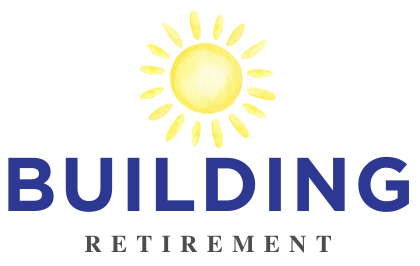Traditional retirement planning relies heavily on stock market investments, 401(k)s, and IRAs. But what if there was a more predictable, inflation-proof way to generate income for life? The 5-House Retirement Plan is a strategy designed to build lasting wealth and passive income using real estate. By acquiring five strategically chosen rental properties, you can create a steady cash flow that supports your retirement without relying on market fluctuations.
Unlike stocks, rental properties provide tangible, appreciating assets that generate monthly income while offering tax advantages. The key is not just owning properties but selecting the right ones and structuring them properly to ensure long-term financial security.
1️⃣ The Foundation: Buy the Right First Property
The first property in your 5-House Retirement Plan lays the groundwork for the entire strategy. This house should be a cash-flow-positive property, meaning that after covering all expenses—mortgage, taxes, insurance, and maintenance—it still generates monthly income.
Why It Matters
- Establishes a reliable income stream that can be reinvested into future properties.
- Helps you learn the ins and outs of property management and rental income without overextending financially.
- Sets the pace for acquiring the next four properties by creating a strong financial base.
How to Choose the Right Property
- Look for single-family or small multi-unit properties in stable, high-demand rental markets with job growth and population increases.
- Ensure the property rents for at least 1% of its purchase price per month (e.g., a $200,000 home should rent for $2,000 per month).
- Focus on low-maintenance properties to minimize repair costs and maximize cash flow.
Key Action Steps
- Work with a real estate agent who specializes in rental properties.
- Run detailed cash flow projections before purchasing.
- Secure long-term, fixed-rate financing to lock in stable costs.
Starting with a strong first property makes it easier to move on to the next phase: scaling up to multiple rentals.
2️⃣ Scale Smart: Use Cash Flow to Fund the Next Properties
Once the first property is generating positive cash flow, the goal is to leverage that income to help acquire the next properties. Instead of relying entirely on personal savings, smart scaling allows you to expand without stretching your finances too thin.
Why It Matters
- Using rental income to fund future properties creates a self-sustaining investment cycle.
- Expanding gradually reduces risk compared to buying multiple properties at once.
- Keeps debt manageable while allowing for steady portfolio growth.
Strategies to Acquire More Properties
- Save rental profits from the first property to use as a down payment for the next.
- Use the BRRRR method (Buy, Rehab, Rent, Refinance, Repeat) to build equity and reinvest in additional properties.
- Leverage home equity lines of credit (HELOCs) from one property to fund the next down payment.
Key Action Steps
- Maintain a strict reinvestment policy—use cash flow to grow, not just spend.
- Focus on markets with strong appreciation potential for better refinancing opportunities.
- Balance financing strategies to avoid overleveraging while still scaling efficiently.
Building up from one rental to a multi-property portfolio takes patience and strategy, but by the time you reach five properties, you’ll have a diversified, income-generating real estate portfolio that provides long-term financial stability.
3️⃣ Optimize for Maximum Cash Flow
Once you own multiple rental properties, the next step is to optimize them for maximum profitability. Many new investors focus only on acquiring properties but overlook the importance of increasing cash flow. The goal at this stage is to reduce unnecessary expenses, improve rental income, and ensure long-term financial stability.
Why It Matters
- Higher cash flow means more income for reinvestment or personal use in retirement.
- Reduced operating costs allow for better risk management and higher profit margins.
- Optimized properties are easier to maintain, minimizing stress and financial strain.
Strategies to Increase Cash Flow
- Set rental rates strategically by researching market trends and making small but valuable property upgrades to justify higher rent.
- Minimize vacancies by keeping tenant turnover low with proactive maintenance, lease renewal incentives, and thorough tenant screening.
- Reduce expenses by negotiating better insurance rates, choosing cost-effective maintenance services, and using energy-efficient appliances to lower utility costs.
Key Action Steps
- Review each property’s financials annually to find areas where expenses can be cut or rent can be increased.
- Build strong relationships with tenants to encourage long-term leases and reduce vacancy rates.
- Consider adding extra revenue streams, such as renting out storage spaces or allowing pets with additional fees.
Optimizing cash flow ensures that your properties generate the highest possible income, creating a more reliable financial foundation for retirement.
4️⃣ Pay Down Debt Strategically
While real estate leverage is a valuable tool for acquiring properties, carrying too much debt into retirement can create financial stress. The next step in the 5-House Retirement Plan is to pay down or eliminate mortgages in a way that balances cash flow and long-term stability.
Why It Matters
- Reducing or eliminating mortgages significantly increases passive income.
- Owning properties outright lowers financial risk, especially during market downturns.
- Creates a long-term safety net, ensuring consistent income in retirement.
Strategies for Paying Down Debt
- Use rental income to make extra principal payments on the highest-interest mortgage first, then apply the same strategy to other properties.
- Refinance properties at lower interest rates when possible to improve cash flow while maintaining manageable debt.
- Consider selling the least profitable property in the portfolio and using the proceeds to pay down mortgages on stronger-performing properties.
Key Action Steps
- Develop a structured debt repayment plan that aligns with your retirement timeline.
- Avoid paying off low-interest mortgages too early if the cash flow can be reinvested at higher returns elsewhere.
- Work with a financial planner or real estate advisor to determine the best balance between debt repayment and reinvestment.
By strategically managing debt, you create a more stable, predictable retirement income while reducing financial obligations. This step moves you closer to the ultimate goal of fully passive income and long-term wealth preservation.
5️⃣ Transition to a Fully Passive Retirement Income
After optimizing cash flow and strategically paying down debt, the final step in the 5-House Retirement Plan is transitioning into a fully passive income stream. The goal is to ensure that rental income provides financial security without requiring day-to-day involvement in property management.
Why It Matters
- Allows you to enjoy retirement without the stress of active property management.
- Ensures long-term wealth preservation while maintaining a steady income.
- Reduces the risks associated with direct property oversight by shifting to a more hands-off approach.
Strategies for Passive Management
- Hire a property management company to handle tenant screening, rent collection, and maintenance issues. While this comes at a cost, it frees up time and eliminates the need for direct involvement.
- Automate as many financial processes as possible, including rent collection, bill payments, and accounting. Many property management platforms allow for seamless automation.
- Shift to lower-maintenance properties over time, such as multifamily units with on-site management or commercial real estate with long-term tenants.
- Use structured withdrawals from rental income, ensuring that a portion is reinvested to cover future repairs, property upgrades, and market downturns.
Key Action Steps
- Interview and hire a reliable property manager before fully stepping back from operations.
- Set up an emergency fund specifically for property-related expenses to handle unexpected repairs or vacancies without financial stress.
- Regularly review portfolio performance to ensure properties are still meeting cash flow expectations and consider selling underperforming assets.
With the right systems in place, your five properties can provide consistent, predictable income for decades, allowing you to enjoy retirement without financial worries.
Building a Retirement That Works for You
The 5-House Retirement Plan offers an alternative to traditional retirement strategies by creating a reliable, inflation-resistant income stream through real estate. Unlike stocks or pensions that fluctuate with the market, rental properties provide steady cash flow, long-term appreciation, and multiple tax advantages.
By carefully selecting properties, scaling smartly, optimizing cash flow, reducing debt, and transitioning to passive management, you can create a retirement plan that provides both financial freedom and lifestyle flexibility.
Real estate isn’t just about owning property—it’s about owning your financial future. With the right strategy, five well-managed rental properties can turn into a lifetime of security, wealth, and peace of mind.



